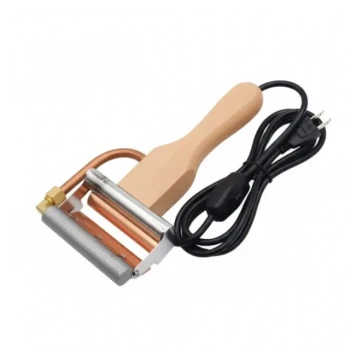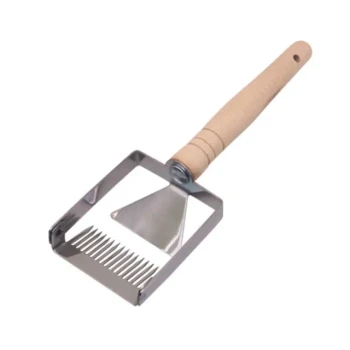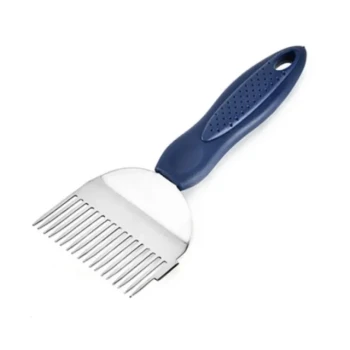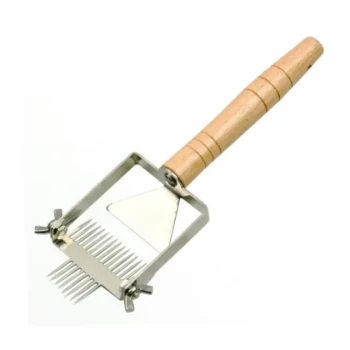To use a honey extractor, you must first uncap the wax because the extractor relies on centrifugal force. Bees seal each honeycomb cell with a thin wax capping once the honey has cured. This airtight seal must be sliced off to allow the honey to be thrown out from the cells as the frames spin inside the extractor.
The core purpose of uncapping is simple: to remove the physical barrier that holds the honey inside the comb. Without uncapping, the centrifugal force generated by the extractor would be useless, and the honey would remain locked in the cells.

The Role of the Wax Capping
A Natural Seal of Quality
When bees have reduced the water content of nectar to the correct level (creating honey), they cap the cell with a thin layer of fresh beeswax.
This capping serves as an airtight seal, preserving the honey and protecting it from moisture and contaminants. A fully capped frame is a clear signal from the bees that the honey is cured and ready for long-term storage.
The Barrier to Extraction
The same wax seal that protects the honey also prevents its removal. A honey extractor works by spinning frames rapidly.
This spinning motion creates a powerful centrifugal force that flings the liquid honey outward, away from the center of the comb. The wax capping acts as a wall, physically blocking the honey from exiting the cell.
The Honey Extraction Workflow
Step 1: Remove Capped Frames
The process begins by selecting and removing frames from the hive that are filled with capped honey. These are the frames that are ready for harvest.
Step 2: Uncap the Comb
This is the critical step. Using a tool like a heated uncapping knife or a specialized fork, the beekeeper carefully slices off the top layer of wax cappings.
This action exposes the liquid honey stored within the thousands of cells on the frame. The removed wax cappings, which are rich with honey, are typically reserved and processed separately.
Step 3: Spin in the Extractor
The uncapped frames are then placed inside the extractor's baskets. It is crucial to balance the load by placing frames of similar weight opposite each other to prevent the machine from vibrating violently and causing damage.
Once activated, the extractor spins the frames, and the centrifugal force drives the now-uncovered honey out of the cells and onto the inner wall of the extractor drum.
Step 4: Collect the Honey
The extracted honey pools at the bottom of the extractor. It can then be drained through a spigot, often called a honey gate, into a bucket or other container for filtering and bottling.
Understanding the Trade-offs
Incomplete Uncapping Reduces Yield
If you miss sections during the uncapping process, the honey in those capped cells will not be extracted. A thorough but gentle uncapping technique is key to maximizing your harvest from each frame.
Preserving the Comb is Paramount
The primary advantage of using an extractor is that it keeps the honeycomb foundation intact. Aggressive uncapping can damage the delicate cell structure.
A well-preserved comb can be returned to the hive, giving the bees a massive head start. They can immediately begin refilling it with honey instead of spending significant energy and resources rebuilding the wax structure from scratch.
Equipment Fragility
Never place frames without proper wire or plastic foundation into an extractor. The force of the spin is immense and can easily cause foundationless combs to break apart, creating a difficult mess and ruining the comb.
Applying This to Your Goal
- If your primary focus is maximizing honey yield: Be meticulous with your uncapping knife or tool, ensuring you expose every honey-filled cell on the frame before it goes into the extractor.
- If your primary focus is preserving comb for the bees: Use a gentle, shallow cut when uncapping. It's better to leave a tiny bit of honey behind than to gouge and destroy the comb structure that your bees worked so hard to build.
- If your primary focus is speed and efficiency: An electric extractor combined with a hot uncapping knife is the standard for processing many frames quickly, which is essential for anyone managing more than a few hives.
Ultimately, uncapping is the essential gateway step that makes honey extraction possible.
Summary Table:
| Purpose of Uncapping | Key Takeaway |
|---|---|
| Remove Physical Barrier | Exposes honey for centrifugal force to work. |
| Enable Extraction | Without uncapping, honey remains locked in the comb. |
| Preserve Comb | Proper technique allows the frame to be reused by bees. |
Ready to streamline your honey harvest?
For commercial apiaries and distributors, efficiency is everything. HONESTBEE supplies the durable, high-performance equipment you need to maximize yield and protect your valuable comb.
From electric extractors that handle high volumes to precision uncapping knives, our wholesale-focused operations are built to support your business.
Contact HONESTBEE today to discuss your beekeeping supply needs and get a quote.
Visual Guide
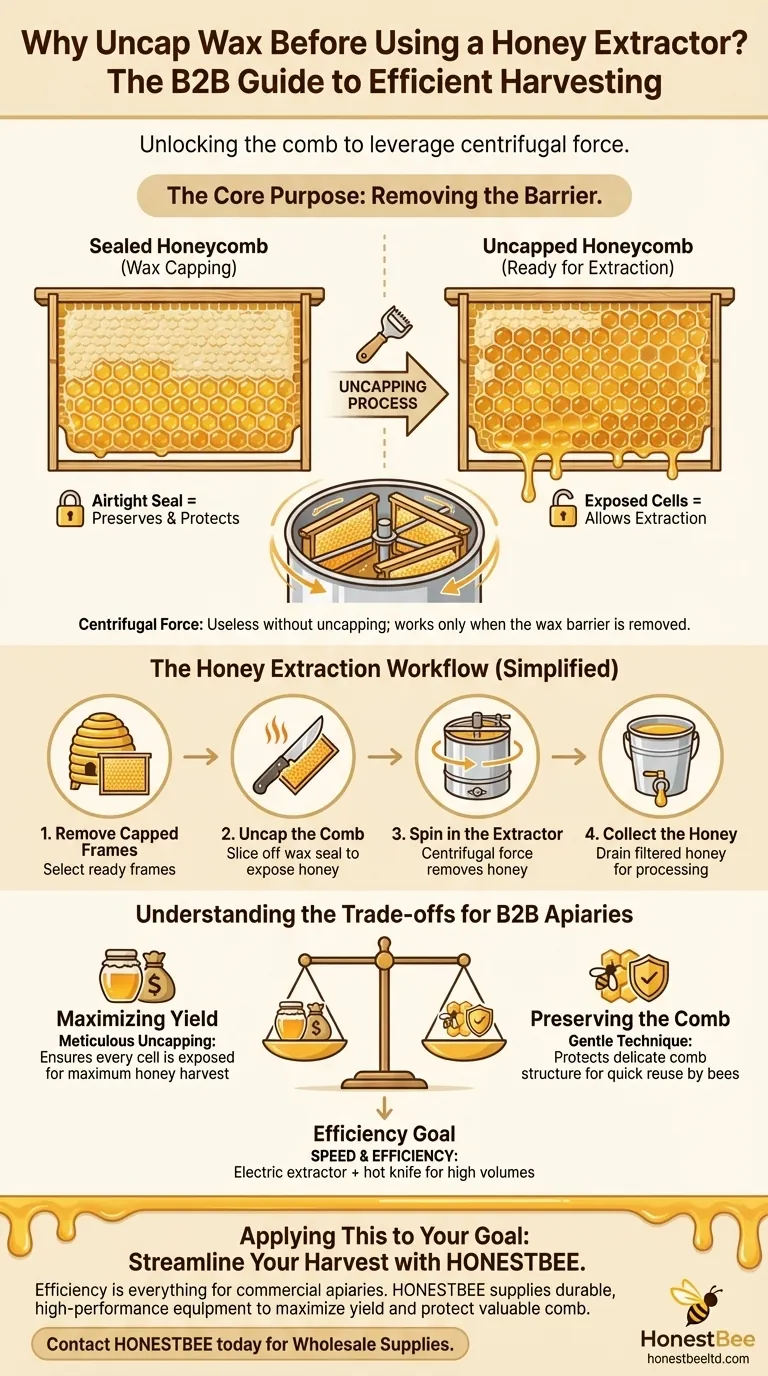
Related Products
- Electric Adjustable Blade Honey Uncapping Plane
- Automatic Honey Frame Uncapper Machine for Beekeeping
- Stainless Steel Dual Blade Uncapping Plane
- Stainless Steel Pivoting Honey Uncapping Fork with Plastic Handle
- Professional Wide Blade Honey Scraper for Beekeeping and Honey Processing
People Also Ask
- How long does it take to learn beekeeping? Master the Beekeeping Learning Curve in 1-2 Years
- How does a bottle capping machine work? Unlock Efficient, Consistent Sealing for Your Production Line
- What are the steps involved in the uncapping process? Master the Art of Harvesting Pure Honey
- What are the key features of the Flow Hive honey extraction method? A Revolution in Beekeeping Convenience
- How does the Flow Hive improve bee health? By Minimizing Stress During Honey Harvest
